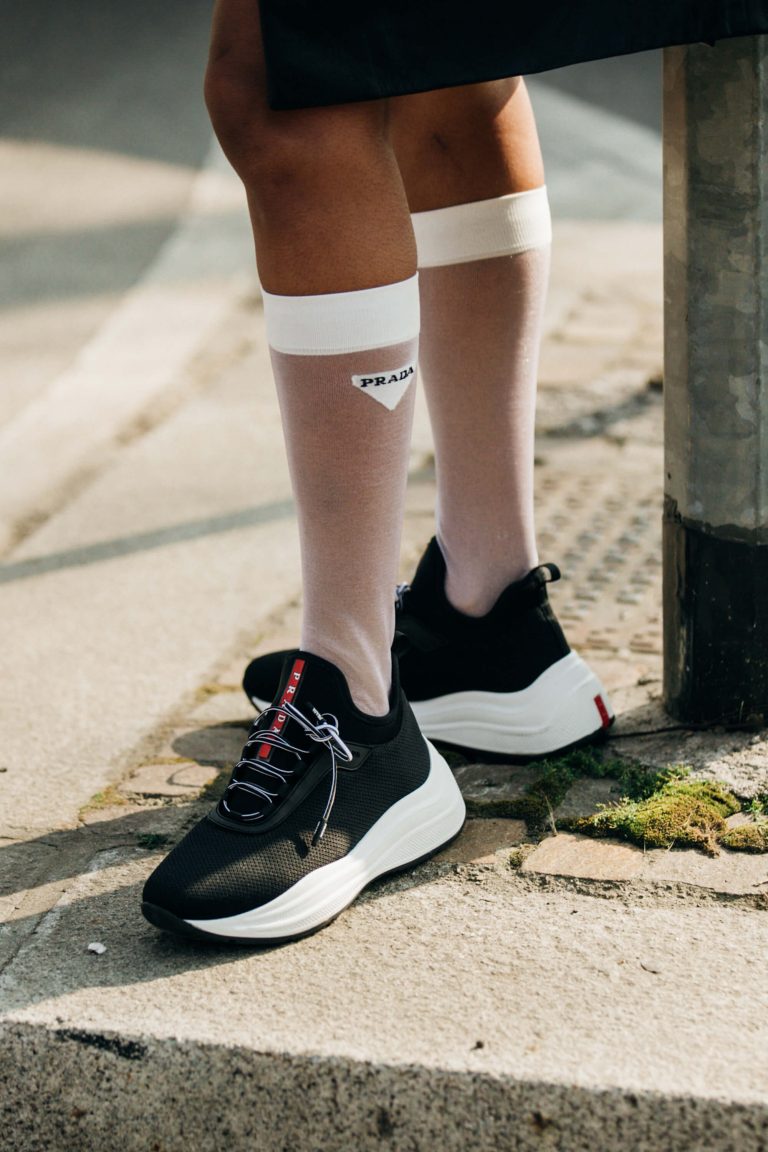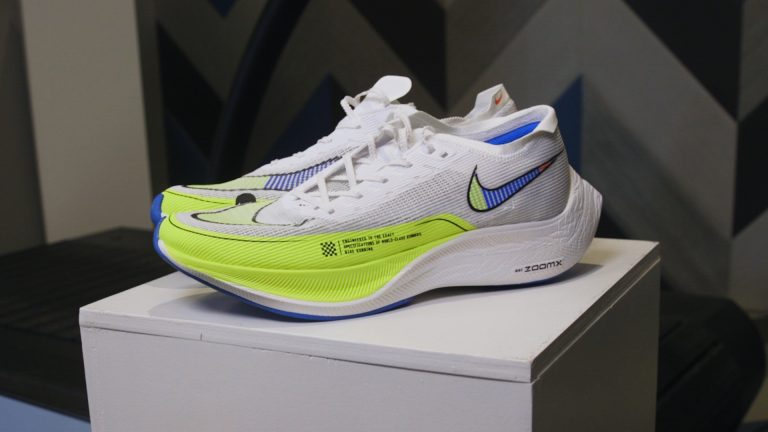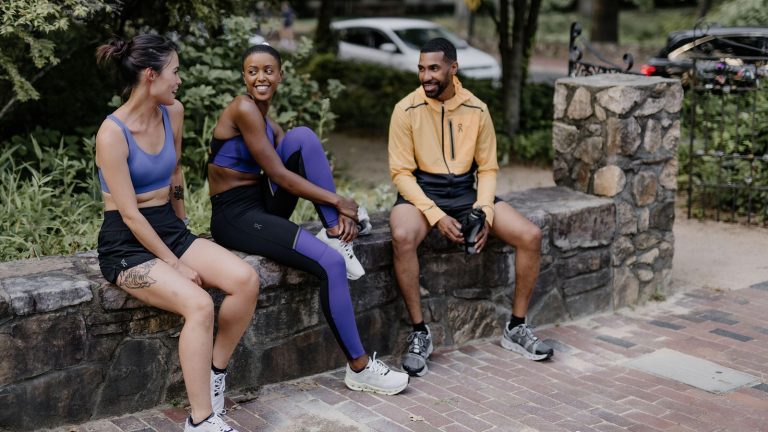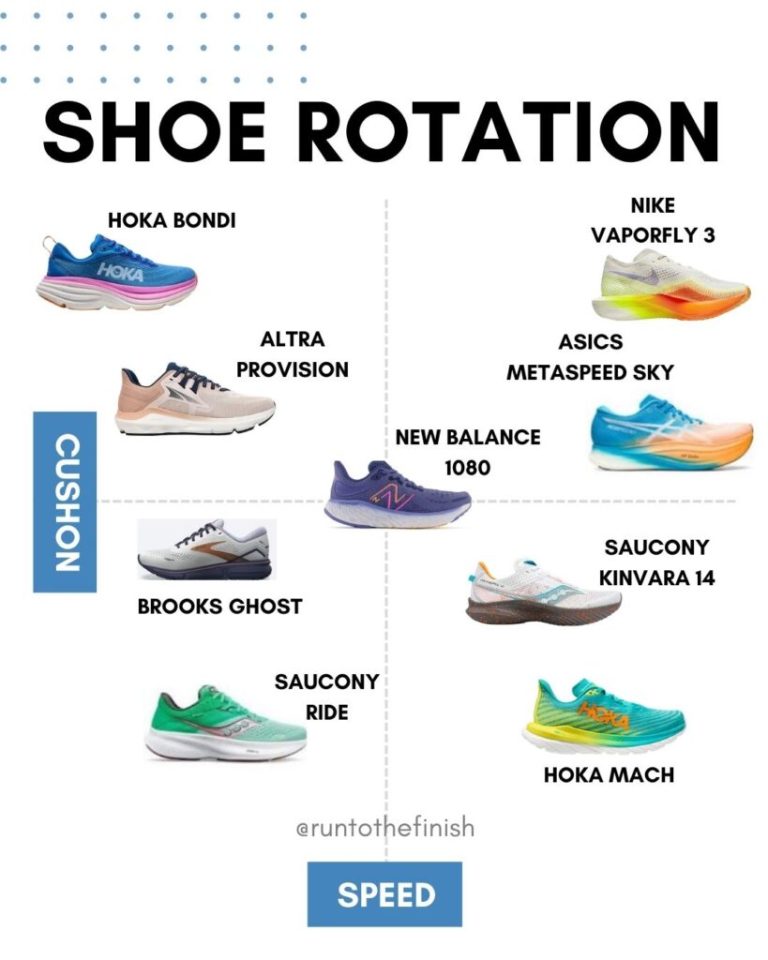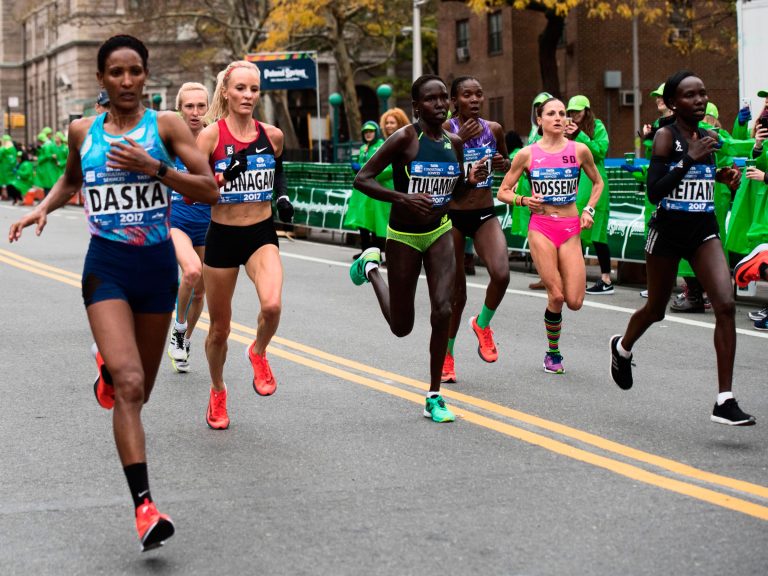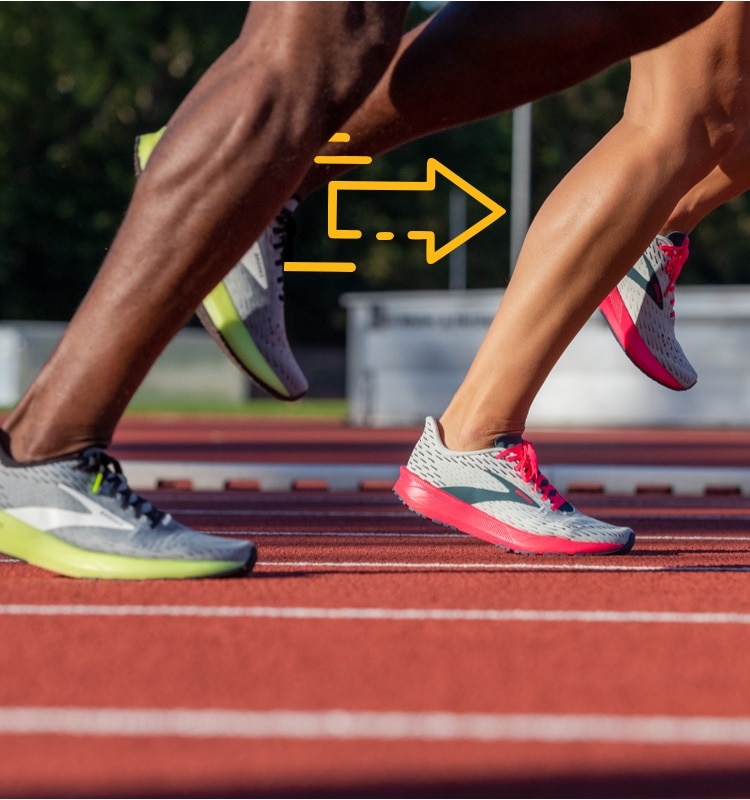Marathon Gear Checklists You Must Notice
Preparing for a marathon is an exciting journey that requires dedication, training, and careful planning. One of the most critical aspects of your preparation is having the right gear to ensure comfort, performance, and safety on race day. From the clothing you wear to the accessories you carry, every detail matters. In this blog post, we’ll provide a comprehensive marathon running gear checklist, covering everything you need to consider, from clothing and footwear to tech gear and recovery items. Whether you’re a seasoned runner or a first-time marathoner, this guide will help you gear up for success on race day!
Having the right gear for marathon running is crucial for ensuring both comfort and performance on race day. Below, we’ll explore the essential items in sections 1-5 of your marathon running gear checklist in detail.
1. Clothing
Running Shirt:
Choose a moisture-wicking shirt made of synthetic materials like polyester or nylon, which help pull sweat away from your body. Look for a shirt that fits comfortably without being too loose or too tight, and consider a lightweight, breathable fabric to keep you cool. Many runners prefer short sleeves for warmer weather and long sleeves for cooler conditions.
Running Shorts/Tights:
Select running shorts or tights that provide a comfortable fit and minimize chafing. Look for features like a built-in liner for added support and pockets for storing small essentials. If you’re running in colder weather, opt for thermal tights or capris to keep your legs warm while still allowing for freedom of movement.
Running Socks:
Invest in high-quality running socks made from moisture-wicking materials. Look for socks that provide cushioning in key areas to help absorb impact and reduce the risk of blisters. Avoid cotton socks, as they retain moisture and can lead to discomfort during long runs. Consider compression socks for added support and improved blood circulation during and after the race.
Sports Bra (for women):
A well-fitted sports bra is essential for female runners. Look for a bra that provides adequate support without being too restrictive. It should be made from moisture-wicking fabric and fit securely to prevent bouncing. Consider the level of support you need based on your body type and personal comfort preferences.
Weather-Appropriate Layers:
Be prepared for varying weather conditions by layering appropriately. In cold weather, consider a lightweight, long-sleeve base layer, a running jacket that offers wind and water resistance, and accessories like gloves and a hat. For hot weather, opt for lightweight, breathable fabrics and a visor or hat for sun protection.
2. Footwear
Running Shoes:
Your choice of running shoes is one of the most important decisions you’ll make as a marathon runner. Select shoes that are comfortable, well-fitted, and specifically designed for long-distance running. Visit a specialty running store to have your gait analyzed and find the best shoe type for your foot. Ensure you break in your shoes during training to avoid discomfort on race day.
Backup Shoes:
It’s wise to have a backup pair of running shoes on hand, just in case your primary pair develops issues or discomfort. Whether you’re experiencing unexpected blisters, your shoes become damaged, or you simply want a change, having an alternative option can save your race day experience.
3. Accessories
Hat/Visor:
A lightweight hat or visor can help shield your face from the sun and keep sweat out of your eyes. Look for breathable materials that provide UV protection and allow for ventilation.
Sunglasses:
A good pair of sunglasses will protect your eyes from harmful UV rays and reduce glare during the race. Look for lightweight, comfortable options with a secure fit that won’t bounce around as you run. Polarized lenses can provide additional comfort in bright conditions.
Running Watch:
A GPS-enabled running watch is a valuable tool for tracking your pace, distance, and heart rate during the marathon. Choose a watch that is user-friendly and offers features that suit your training needs, such as interval training and race pace tracking.
Headband/Wristband:
A moisture-wicking headband can help manage sweat and keep your hair out of your face. Wristbands can also be useful for wiping sweat from your brow or for carrying small items like energy gels.
4. Hydration and Nutrition
Hydration Belt/Pack:
During a marathon, staying hydrated is crucial. A hydration belt or pack allows you to carry water or electrolyte drinks without needing to rely solely on aid stations. Choose a pack that fits comfortably and doesn’t bounce while you run. Consider the number of pockets available for storing gels or other small items.
Water Bottles:
Invest in lightweight, durable water bottles that are easy to carry. Some bottles come with straps or clips for easy attachment to your hydration belt or pack. If you prefer to use disposable bottles, make sure to practice with them during training to get used to their handling.
Energy Gels/Chews/Bars:
Fueling during the race is essential for maintaining your energy levels. Experiment with different types of energy gels, chews, or bars during your training runs to find what works best for you. Be mindful of how your stomach reacts to different products, and plan your fueling strategy for race day accordingly.
Electrolyte Tablets/Powder:
Replenishing electrolytes is important, especially on warm race days. Consider carrying electrolyte tablets or powder to add to your water. They help replace the minerals lost through sweat and can improve your performance and recovery.
5. Safety and Comfort
Body Glide/Vaseline:
Preventing chafing during long runs is crucial for comfort. Use body glide or Vaseline on areas prone to friction, such as thighs, underarms, and feet. Apply it generously before your run to create a barrier against moisture and friction.
Band-Aids:
Pack a few adhesive band-aids for blisters or minor injuries that may occur during training or the race. It’s always better to be prepared for unexpected discomfort on race day.
Sunscreen:
Protect your skin from sunburn, especially during longer races. Choose a high-SPF sunscreen that is sweat-resistant and designed for athletic use. Apply it generously before the race and reapply as needed during longer training runs.
Lip Balm:
Chapped lips can be uncomfortable, especially during long hours outside. Use a lip balm with SPF to protect your lips from sun damage and keep them hydrated throughout the race.
6. Tech Gear
Phone:
Carrying a phone during the marathon can be beneficial for emergencies, navigation, or sharing your experience on social media. Ensure your phone is charged and has adequate storage for any apps you plan to use, such as a GPS tracker or music playlist. If you plan to use your phone for music or podcasts, consider bringing a pair of wireless earphones that are comfortable and won’t fall out during your run.
Armband/Running Belt:
An armband or running belt provides a secure place to store your phone, keys, and other small essentials while running. Look for options that offer a snug fit without bouncing and can accommodate your specific device. Some belts come with additional pockets for nutrition or hydration, making them a versatile choice.
Earphones/Headphones:
For many runners, music or motivational podcasts can enhance the running experience. Choose lightweight, comfortable earphones or headphones that won’t fall out while running. Wireless options can minimize distractions, but ensure they have a reliable battery life. If you prefer to run without music, consider using bone conduction headphones to stay aware of your surroundings.
Portable Charger:
If you rely on your phone or GPS watch, consider carrying a portable charger for race day, especially for ultra-long events. This ensures that your devices remain charged for emergency communication or tracking your progress.
7. Race Essentials
Race Bib:
The race bib is essential for identifying you as a participant and may also be required for timing. Ensure your bib is securely attached to your shirt or shorts with safety pins or a race belt before the start of the race. Follow race instructions for displaying the bib, as some races have specific requirements.
Timing Chip:
Most races use timing chips to track your progress. Ensure your chip is correctly attached according to the race organizer’s instructions—usually on the back of your bib or as an ankle strap. Double-check that it’s securely fastened before the race begins to ensure accurate timing.
Pace Band:
A pace band can be a valuable tool for helping you stick to your race strategy. Write down your target splits based on your overall goal and refer to the band during the race to monitor your pacing. This can help prevent you from starting too fast and ensure you finish strong.
Identification:
In case of an emergency, it’s wise to carry some form of identification with you. This could be an ID card or a wristband with your name and emergency contact information. Many runners opt for ID tags that can be pinned to their shoes or worn as bracelets.
8. Recovery Items
Foam Roller:
A foam roller can be incredibly beneficial for post-race recovery. It helps relieve muscle tension and promotes blood circulation, speeding up recovery. Consider bringing a small, portable foam roller with you to the race for immediate post-race use or use it in the days following the marathon to ease soreness.
Compression Socks/Sleeves:
Compression gear is designed to support your muscles and improve circulation during and after your run. Wearing compression socks or sleeves post-race can help reduce swelling and speed up recovery. They are especially helpful if you have to travel after the race or if you’re prone to soreness.
Change of Clothes:
After finishing the race, change into a comfortable set of clothes to allow your body to cool down and recover. Opt for breathable, loose-fitting clothing to promote airflow and comfort. Don’t forget to bring a warm layer if the weather is cool, as your body temperature may drop after the race.
Towel:
A quick-drying towel is essential for cleaning up after the race. Whether you need it for sweat, spills, or to wipe down after a shower, a compact towel will make your post-race experience much more comfortable.
Recovery Snack:
Having a recovery snack ready can replenish your energy levels and aid muscle recovery. Look for snacks high in protein and carbohydrates, such as a protein bar, a banana with almond butter, or a sports drink. Aim to consume this snack within 30 minutes of finishing the race for optimal recovery.
9. Emergency Kit
First Aid Kit:
A basic first aid kit is a good safety measure to have on hand. Include items like antiseptic wipes, adhesive bandages, blister pads, and pain relievers. Having these supplies can be invaluable for addressing minor injuries or discomfort during training or the race.
Emergency Cash/Card:
Having some cash or a card can be helpful for unexpected expenses on race day, such as buying water or food. Keep it in a secure pocket or compartment in your gear for easy access.
Emergency Contact Info:
Make sure to carry a card or have information readily accessible with emergency contact details. In the unlikely event of an emergency, this information can be crucial for medical personnel.
10. Miscellaneous
Race Packet:
Be sure to pick up your race packet before the event, which usually contains your bib number, timing chip, and race instructions. Familiarize yourself with the contents and any specific guidelines for race day to ensure a smooth experience.
Trash Bag:
A trash bag can be useful for storing wet or dirty clothes after the race. It’s also handy for keeping your belongings organized, especially if the weather is unpredictable.
Hand Sanitizer:
Keeping hand sanitizer handy is essential, especially in crowded environments. Use it before eating or after touching public surfaces to maintain good hygiene.
Face Mask:
If required by race regulations or if you’re running in crowded conditions, consider bringing a face mask for safety. Make sure to choose a comfortable mask that allows for easy breathing while running.
Conclusion
Preparing for a marathon involves careful planning and organization, and having the right gear can significantly impact your performance and overall experience on race day. From essential clothing and footwear to tech gear, recovery items, and safety kits, each item plays a vital role in ensuring that you’re ready to tackle the challenge ahead. By following this comprehensive marathon running gear checklist, you’ll feel confident and prepared as you embark on your 26.2-mile journey. Remember, investing time in preparation is just as important as your training, so take the time to ensure you have everything you need for a successful marathon experience. Happy running!

